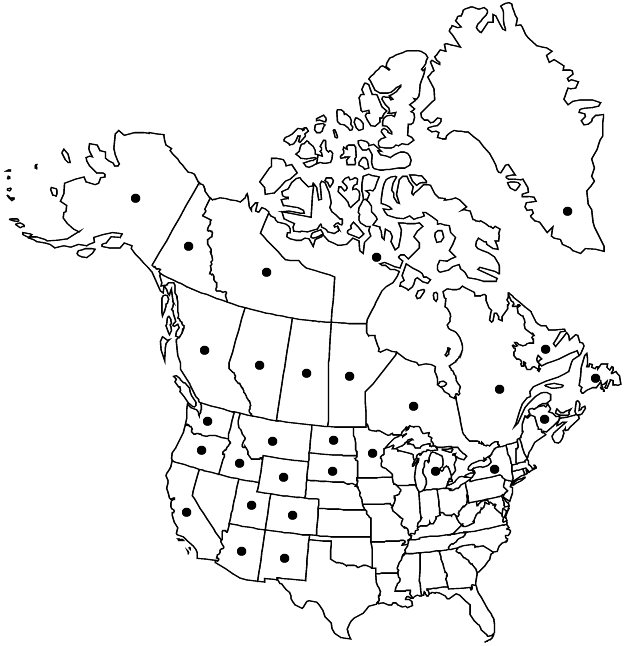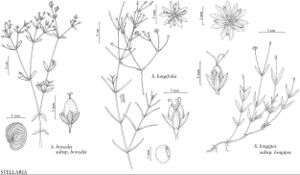Difference between revisions of "Stellaria longipes subsp. longipes"
FNA>Volume Importer |
FNA>Volume Importer |
(No difference)
| |
Revision as of 22:33, 16 December 2019
Plants usually forming clumps, cushions, or mats, but sometimes with diffuse, straggling stems. Leaf blades linear-lanceolate to ovate-triangular. Capsules purplish black. 2n = 52–107, mostly 52, 78, or 104.
Phenology: Flowering late spring–summer.
Habitat: Grassy places along streams, moist gravel or sand, arctic and alpine tundra, among rocks, on cliffs
Elevation: 0-3800 m
Distribution

Greenland, Alta., B.C., Man., N.B., Nfld. and Labr., N.W.T., Nunavut, Ont., Que., Sask., Yukon, Alaska, Ariz., Calif., Colo., Idaho, Mich., Minn., Mont., N.Mex., N.Y., N.Dak., Oreg., S.Dak., Utah, Wash., Wyo., Europe, Asia.
Discussion
Subspecies longipes, as shown by the above synonymy, is an exceptionally variable polyploid complex. Variation in this circumboreal, circumpolar taxon is under both genic and environmental control. Character states that are under genic control, such as pubescence, are scattered more or less at random throughout the range of distribution of the complex, and there is little discernible correlation among them, or with chromosome number or environment. All populations that have been studied are interfertile, and most show a high degree of phenotypic plasticity, being affected by such environmental conditions as temperature, day length, and shade. Most populations are self-compatible, although pollination by small insects, mainly flies, is the norm. Vegetative reproduction through fragmentation of the rhizome is also common. Hence, the complex consists of a large number of interfertile but more or less self-perpetuating, highly plastic biotypes.
A presumed hybrid between Stellaria longipes and S. borealis has been collected in the La Sal Mountains of Utah, although attempts to cross the two species experimentally were unsuccessful. Hybrids between S. longipes and S. longifolia occasionally occur and have been produced artificially (C. C. Chinnappa 1985); they are sterile triploids (2n = 39).
Selected References
None.
